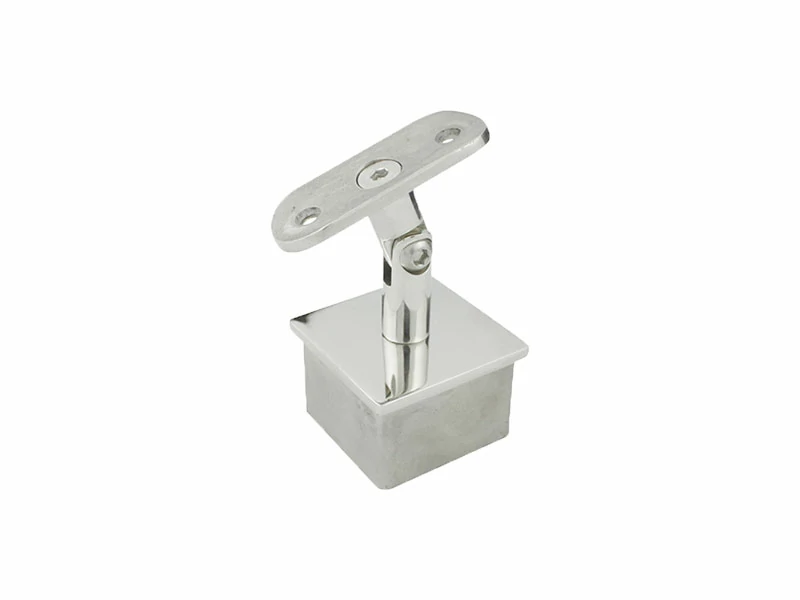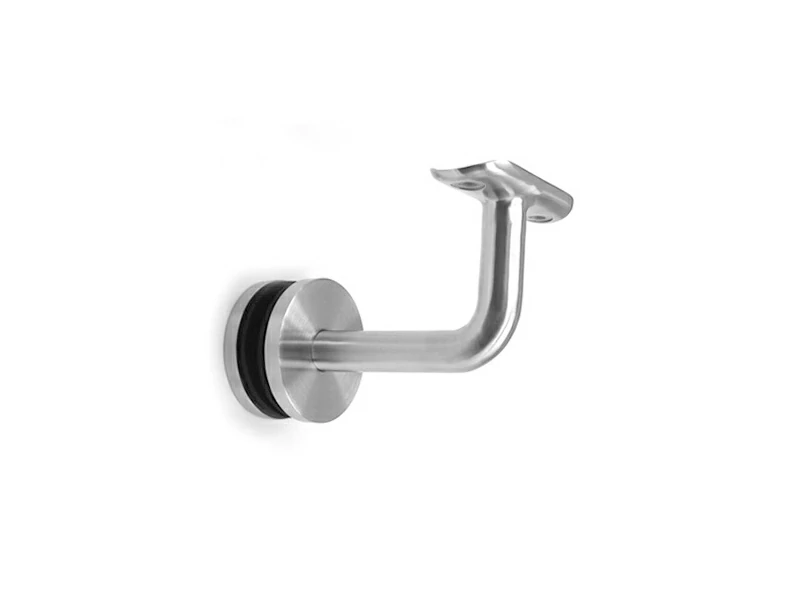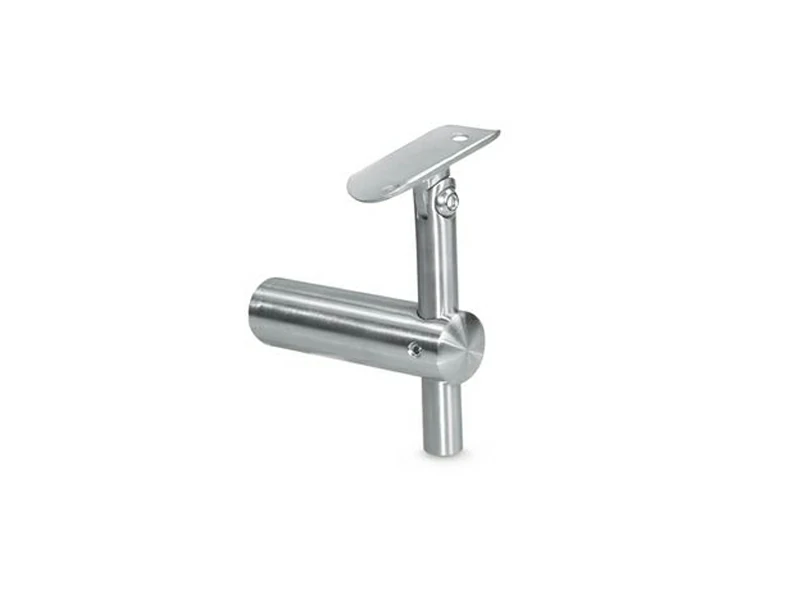When installing or maintaining handrails, especially in staircases and other areas requiring sturdy support for safety, handrail brackets and handrail supports are both essential components in providing safety and stability to stairs, balconies, and other structures. Both components play crucial roles in the installation and stability of handrails, but they serve slightly different purposes and are suited for different aspects of the handrail assembly.
Handrail Brackets:
Handrail brackets are hardware pieces that attach the handrail to the wall. They are primarily used when the handrail needs to be secured directly to a wall or a vertical surface.
Features:
Material: Typically made of metals such as stainless steel, brass, or aluminum for durability and strength.
Design Variability: Usually L-shaped or U-shaped, with one part attaching to the wall and the other to the handrail. They are available in various styles and finishes to match different architectural and aesthetic requirements.
Spacing: They are installed at regular intervals along the length of the handrail to provide consistent support and to comply with building codes (usually every 4 feet or as per local codes).
Load Distribution: Brackets help distribute the load evenly across the wall, reducing pressure at any single point on the handrail.
Applications:
Ideal for residential and commercial buildings where the handrail must be mounted to a wall, such as in hallways or along staircases.
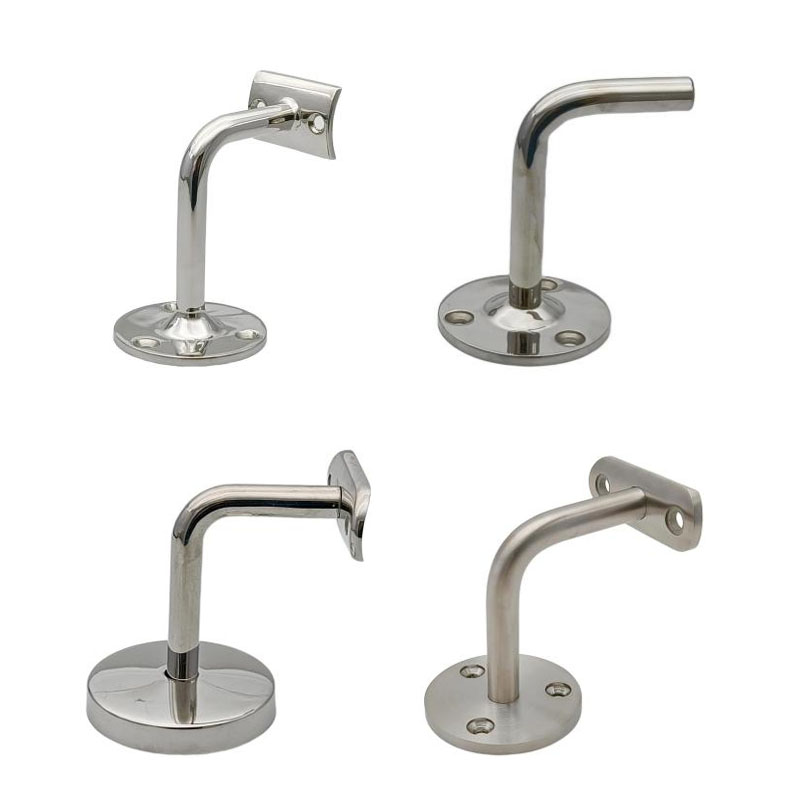
Handrail Supports:
Handrail supports, often referred to as balusters or spindles, are vertical posts that support the handrail from underneath, provide additional support to the handrail, especially in long spans or areas with heavy use, usually as part of a balustrade system.
Features:
Material: Can be made from wood, metal, glass, or even composite materials, depending on design requirements and structural needs.
Design Flexibility: Often freestanding posts or columns that connect to the handrail, offering a wide range of design options, from simple and functional to highly decorative.
Structural Role: May require a base plate or foundation for stability, supports the handrail from the bottom and contributes to the overall strength and stability of the balustrade system.
Spacing: Like brackets, supports need to be spaced correctly (usually about 4 inches apart) to prevent excessive flexing of the handrail and to ensure safety by preventing objects (or small children) from passing through.
Applications:
Commonly used in deck railings, staircases, and other areas where a freestanding handrail system is preferred or required for both support and aesthetic components.
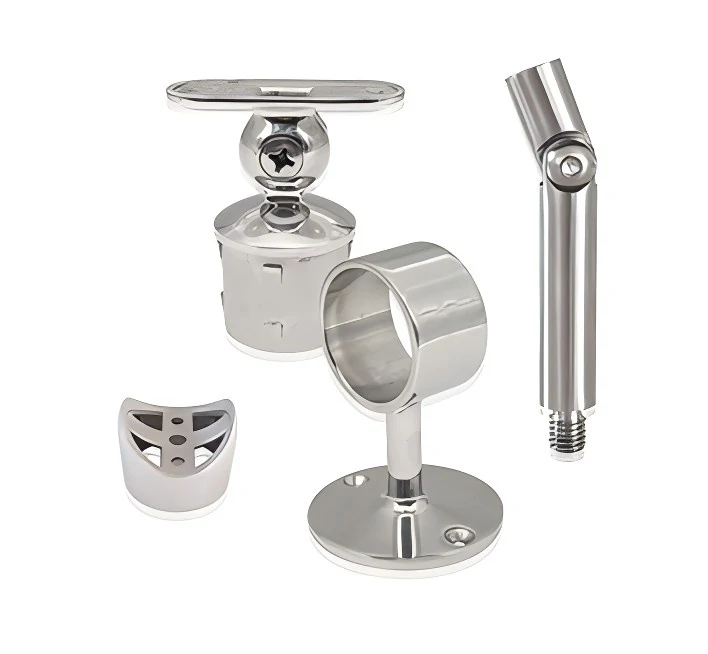
How to Choosing Between Handrail Brackets and Handrail Supports
Factors to Consider:
1. Structural Requirements
Evaluate the load requirements and building codes. Handrail brackets provide direct support from the wall, which can be stronger in certain configurations. Supports as part of a balustrade system distribute the load across several points, which can be advantageous in freestanding installations.
2. Aesthetics
Consider the visual impact of each option. Brackets tend to have a minimalistic look, while supports can be designed as elaborate or simple, contributing significantly to the stairway's visual appeal.
3. Installation Surface
Assess the nature of the installation surface. Brackets are suitable for solid walls where drilling and securing can be reliably achieved. Supports need a secure connection at both the top and bottom, which may require more extensive installation work, especially on open staircases.
4. Material and Durability
Choose materials based on the environment (indoor vs. outdoor) and expected wear and tear. Metals like stainless steel or wrought iron are common for both brackets and supports but may require different maintenance depending on their placement and exposure to elements.
5. Compliance with Regulations
Ensure that whichever option you choose complies with local building codes and ADA standards if applicable. This includes considerations for load capacity, spacing, and height.
6. Cost and Complexity of Installation
Handrail brackets are generally simpler and less expensive to install compared to a full balustrade system with supports. Consider your budget and the complexity of the project when making your choice.
Decision Making
For a wall-mounted handrail (especially in narrower staircases or hallways), handrail brackets are typically the best choice as they are efficient, cost-effective, and less intrusive.
For freestanding rails or where you need or prefer the look of a continuous balustrade, handrail supports as part of a complete system would be more appropriate. They offer greater design flexibility and can enhance the safety and appearance of the stairway or deck.
